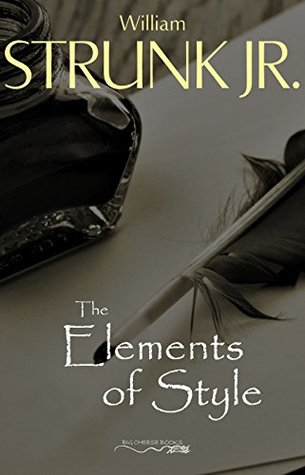More on this book
Community
Kindle Notes & Highlights
If two or more clauses, grammatically complete and not joined by a conjunction, are to form a single compound sentence, the proper mark of punctuation is a semicolon.
It is permissible to make an emphatic word or expression serve the purpose of a sentence and to punctuate it accordingly: Again and again he called out. No reply. The writer must, however, be certain that the emphasis is warranted, and that he will not be suspected of a mere blunder in syntax or in punctuation.
7. A participial phrase at the beginning of a sentence must refer to the grammatical subject.
Sentences violating this rule are often ludicrous. a) Being in a dilapidated condition, I was able to buy the house very cheap. b) Wondering irresolutely what to do next, the clock struck twelve.
In dialogue, each speech, even if only a single word, is a paragraph by itself; that is, a new paragraph begins with each change of speaker.
According to the writer's purpose, he may, as indicated above, relate the body of the paragraph to the topic sentence in one or more of several different ways. He may make the meaning of the topic sentence clearer by restating it in other forms, by defining its terms, by denying the contrary, by giving illustrations or specific instances; he may establish it by proofs; or he may develop it by showing its implications and consequences. In a long paragraph, he may carry out several of these processes.
10. Use the active voice. The active voice is usually more direct and vigorous than the passive:
a) There were a great number of dead leaves lying on the ground. b) Dead leaves covered the ground.
a) The reason that he left college was that his health became impaired. b) Failing health compelled him to leave college.
a) It was not long before he was very sorry that he had said what he had. b) He soon repented his words.
Put statements in positive form. Make definite assertions. Avoid tame, colorless, hesitating, non-committal language. Use the word not as a means of denial or in antithesis, never as a means of evasion.
a) He did not think that studying Latin was much use. b) He thought the study of Latin useless.
Consciously or unconsciously, the reader is dissatisfied with being told only what is not; he wishes to be told what is. Hence, as a rule, it is better to express even a negative in positive form.
12. Use definite, specific, concrete language. Prefer the specific to the general, the definite to the vague, the concrete to the abstract.
a) He showed satisfaction as he took possession of his well-earned reward. b) He grinned as he pocketed the coin.
the surest method of arousing and holding the attention of the reader is by being specific, definite, and concrete.
In exposition and in argument, the writer must likewise never lose his hold upon the concrete, and even when he is dealing with general principles, he must give particular instances of their application.
14. Avoid a succession of loose sentences.
15. Express co-ordinate ideas in similar form. This principle, that of parallel construction, requires that expressions of similar content and function should be outwardly similar. The likeness of form enables the reader to recognize more readily the likeness of content and function.
16. Keep related words together. The position of the words in a sentence is the principal means of showing their relationship.
18. Place the emphatic words of a sentence at the end.
The proper place in the sentence for the word, or group of words, which the writer desires to make most prominent is usually the end.
As noun, often loosely used in perfunctory writing about fashions, music, painting, and other arts: “an Oriental effect;” “effects in pale green;” “very delicate effects;” “broad effects;” “subtle effects;” “a charming effect was produced by.” The writer who has a definite meaning to express will not take refuge in such vagueness.
Feature. Another hackneyed word; like factor it usually adds nothing to the sentence in which it occurs.
In some kinds of formal writing, as geometrical proofs, it may be necessary to use respectively, but it should not appear in writing on ordinary subjects.
a) A member of the student body b) A student
System. Frequently used without need.


